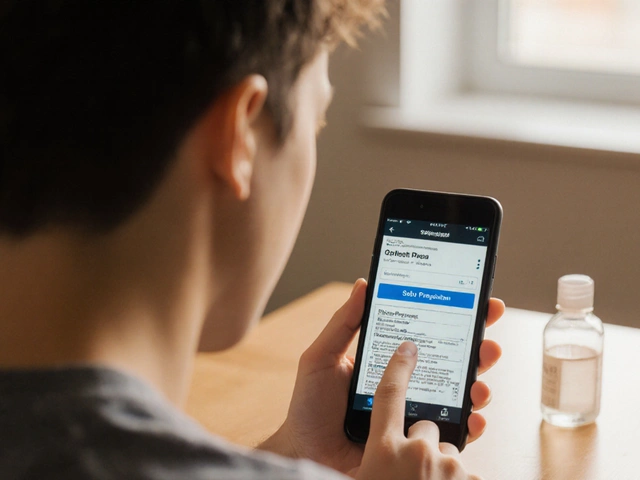The 30 30 30 diet isn't your run-of-the-mill weight loss plan. No calorie counting, no endless lists of forbidden foods. Just one main rule that’s got everyone talking: eat 30 grams of protein within 30 minutes of waking up, then squeeze in 30 minutes of moderate movement. Sound simple? That’s the point.
Here’s why folks are paying attention. Packing your first meal with protein isn’t just about filling your stomach — it can help keep hunger in check, boost your metabolism, and balance blood sugar right from the get-go. Instead of reaching for sugary cereals or skipping breakfast, you’re setting a steady pace for your appetite all day.
Plenty of regular people have found this trick surprisingly doable compared to more extreme diets. If you can’t stand being hangry by 10 a.m. or hitting an energy slump after a carb-heavy breakfast, this approach makes mornings less of a struggle. And because you don’t need weird protein powders or a chef’s degree, it fits messy real-life routines.
- What Is the 30 30 30 Diet?
- How Does the 30 30 30 Diet Work?
- Real-World Tips and Sample Foods
- Potential Downsides and Myths
What Is the 30 30 30 Diet?
The 30 30 30 diet lays out one big rule: get 30 grams of protein in your body within 30 minutes of waking up, then aim for 30 minutes of movement soon after. Don’t worry—no one expects you to deadlift your fridge. Brisk walking, stretching, or a home workout does the trick. It’s meant to be repeatable, and a lot of people find it actually fits into their mornings without a ton of effort.
Here’s how it breaks down:
- 30 grams of protein—right after you wake up. This isn’t just about muscle; protein kick-starts your metabolism, which means your body gets to work burning calories immediately. Plus, it helps prevent the munchies and crashes most people get from sugary breakfasts.
- 30 minutes after waking—why the rush? Morning is when your body is most ready to absorb nutrients after fasting overnight. This timing strategy is designed to nudge your body out of sleep mode, keeping blood sugar steady and making you less likely to crave junk later.
- 30 minutes of movement—doesn’t have to be intense, but getting your body moving first thing helps wake you up and starts burning fat. It doesn’t even have to be all at once; breaking it up works too.
The science part comes from how protein affects appetite and metabolism. A study from the University of Missouri found that high-protein breakfasts helped folks feel fuller longer and craved fewer high-fat foods during the day. That’s a big deal if you’re tired of constant snacking or feeling out of control around cookies and chips.
People who follow the 30 30 30 diet usually report steadier energy, fewer bizarre cravings, and an easier time sticking with their weight loss game plan. It isn’t a magic ticket, but for a lot of regular people, it feels way less restrictive than cutting out whole food groups or obsessively tracking every calorie.
How Does the 30 30 30 Diet Work?
This diet nails two things right away: protein and timing. The core idea is to eat 30 grams of protein within 30 minutes of waking. Why? Your body’s been fasting all night, and loading up on protein right out of bed helps curb cravings, stops wild blood sugar swings, and can actually shift your metabolism to kick into fat-burning mode.
Protein takes longer to digest than carbs or fat. That’s why it helps you stay full longer, keeps your energy up, and even signals your body to preserve muscle when you lose weight. Since most people eat carb-heavy breakfasts, swapping that out for a protein-packed meal is a big change that makes a real difference.
The second part is movement. Doing 30 minutes of exercise in the morning (like walking, cycling, or simple bodyweight moves) can help rev up your metabolism, support fat loss, and get your head in the game for the rest of the day. The 30 30 30 approach isn’t all about high-intensity workouts—just getting active early counts.
If you want a snapshot, here’s what a day might look like:
- Wake up and have a meal with about 30 grams of protein—maybe eggs, Greek yogurt, cottage cheese, or a protein shake.
- Within the next half hour, jump into 30 minutes of movement. This could be a brisk walk, a light jog, or an at-home HIIT session—no fancy gym gear needed.
- Go about your day as normal, but notice how those morning choices help manage your hunger and energy.
This isn’t just guesswork—studies have shown that higher-protein breakfasts help people eat fewer calories and keep weight off longer. Here’s a quick look at what happens inside your body when you follow the 30 30 30 diet:
| Benefit | What Happens in Your Body? |
|---|---|
| Appetite control | Reduces hunger hormones, helps you snack less |
| Blood sugar | Keeps things steady, so you don’t crash mid-morning |
| Metabolism | Speeds up by making your body work to process higher protein |
| Fat loss | Helps burn more fat, keeps muscle safe |
People like the 30 30 30 diet because it fits into real life and doesn’t require crazy willpower or weird foods. If you’re tired of starting diets you can’t finish, this might be worth a shot.

Real-World Tips and Sample Foods
Alright, sticking to the 30 30 30 diet would be tough if you had to cook complex meals every morning. But you don’t. Hitting that magic 30 grams of protein right after you wake up is easier than you’d think. No need for expensive shakes or weird supplements—just some smart food choices and prepping ahead.
- Eggs: Scramble or boil 4-5 eggs and you’re nearly at 30 grams right there. Pair with a side of cottage cheese for an extra boost.
- Greek Yogurt: Grab a large Greek yogurt (200g, plain works best for less sugar) and throw in chia seeds or nuts. This combo easily hits your protein goal.
- Chicken Breast: Cook up some chicken in advance and keep it ready to toss in a breakfast wrap or salad.
- Protein Oatmeal: Mix oats with a scoop of protein powder, almond butter, and some berries for flavor.
- Low-Fat Cheese: Pair 2-3 cheese sticks with turkey slices for a breakfast on the go.
Bored with the same foods? Make a basic list of your favorite protein sources. Rotating a few will keep things fresh. Here’s a quick cheat table you can use to plan:
| Food | Serving Size | Protein (g) |
|---|---|---|
| Eggs | 5 large | 31 |
| Greek Yogurt | 1 container (200g) | 20 |
| Cottage Cheese | 1 cup | 27 |
| Chicken Breast | 100g cooked | 30 |
| Tofu | 150g | 18 |
| Protein Shake (whey) | 1 scoop | 24 |
One real trick is prepping breakfasts in advance. Make egg muffins, store a tub of cottage cheese, or cook extra chicken for wraps. If you have a busy schedule, these five-minute solutions mean you won’t skip the high-protein breakfast just because you’re running late.
Don’t forget, the 30-minute movement isn’t set in stone. You can walk, stretch, dance, or do a quick YouTube workout at home. The key is consistency—not perfection.
Potential Downsides and Myths
The 30 30 30 diet sounds straightforward, but there are a few issues anyone considering this plan should know about. First, not everyone can tuck away 30 grams of protein first thing in the morning, especially if you’re not a breakfast person. Forcing yourself when you’re not hungry can feel rough and might backfire by making healthy eating seem like a chore.
Another thing—if your regular meals are already loaded with protein, doubling up can add more calories than you think. Everyone talks about protein being great for fullness, but too much of it (especially with extra cheese, processed meats, or shakes loaded with sugar) can stall weight loss or even make you gain weight. Watch out for hidden sources of fat or carbs in common protein breakfasts like bagels with cream cheese or bacon-heavy omelets.
Some folks also believe this diet alone is a magic fix. Truth is, eating 30 grams of protein in the morning won’t wipe out the effects of overeating later or skipping exercise. The "30 minutes of movement" part isn’t super clear either—walking, jogging, or lifting weights? What actually gets the best results? Consistency matters more than perfection here.
One myth that keeps popping up: that slamming down protein boosts metabolism so high you’ll burn fat no matter what you eat. That’s not quite true. While protein does make your body work a little harder to digest, overall daily calorie intake and activity level are what really matter for weight loss.
- If you have kidney problems or other conditions, check with a healthcare provider before ramping up your protein.
- Don’t ignore other food groups—veggies, healthy fats, and fiber matter too.
- Interested in numbers? A study in 2022 found that people who had 25-30 grams of protein at breakfast reported better fullness for up to 4 hours, but the difference in actual pounds lost over 12 weeks was small compared to those just eating less calories overall.
The bottom line: the 30 30 30 diet works best as a simple framework, not a strict rule. It’s easy to overthink it—what matters is balance, a focus on real foods, and not chasing quick fixes.





